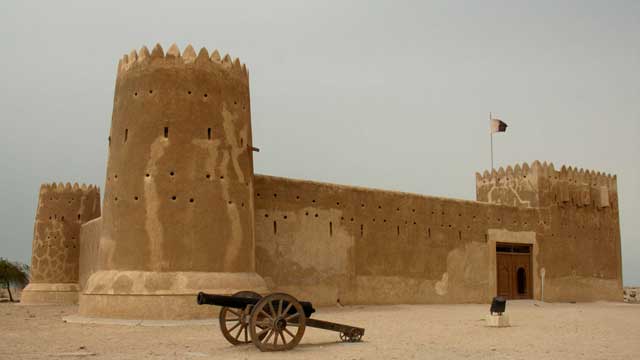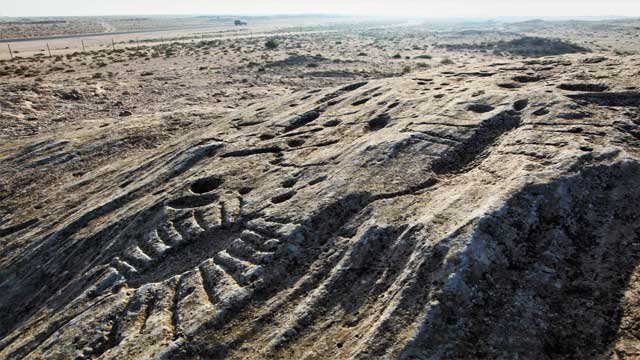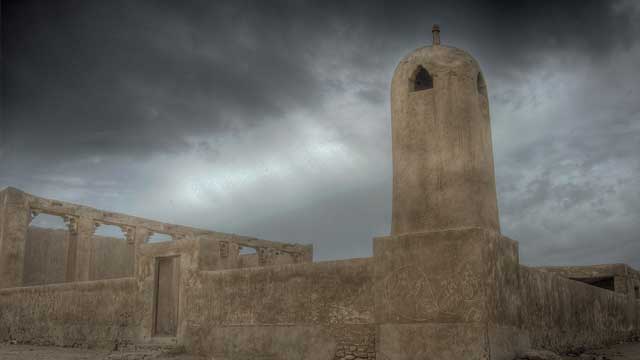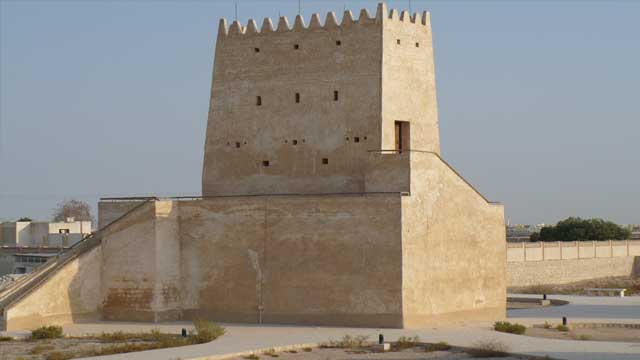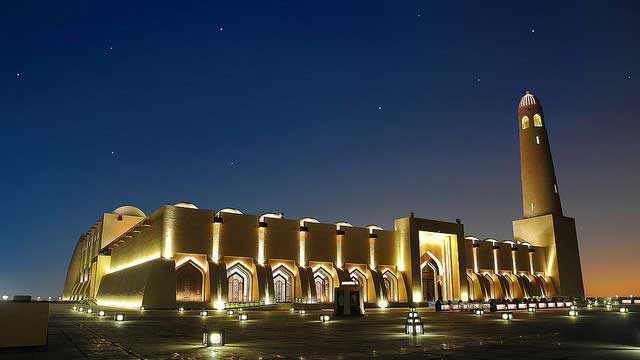Abu Manaratain mosque
A huge tree that looms over the building distinguishes the Abu Manaratain mosque from all other mosques in Qatar. Located in Al-Wakra, one of the oldest cities in the state, this mosque was constructed in 1940.
In addition to the tree that rests as its close neighbor, this mosque has several other eccentricities. First is its name. 'Manaratain' means 'two minarets' yet the mosque only has one.
This and other clues may indicate that the building had a different shape at some point in its past.
A second peculiarity is that the rectangular area were the mosque is built lacks the high walls that are typical of Qatari mosques.
The 'mothawaddah,' which is where ablutions take place, is situated in the southern end of the courtyard. It consists of a small pool accessible by a staircase. This pool used to be filled with water from the well in the courtyard. It is at the 'mothawaddah' that Muslims perform the 'wudu,' which is a long sequence of body cleaning steps completed before entering the mosque for prayer. Islamweb (link to the web page where the movie is found) features a movie explaining the sequence of steps.
At the north end of the courtyard stands a 10-meter-tall minaret, made up of a squared base and a cylinder-shaped structure. Inside it, a narrow spiral staircase allowed the 'muezzin' to climb to the top where he could call people to prayer through four small arched windows. Next to the minaret, a small room housed the 'imam,' who is the religious authority in charge of leading the prayers.
A third unusual aspect of this mosque is the prayer room. Unlike other mosques in Qatar, it does not have the typical portico overlooking the courtyard. Inside, there is a very simple 'mehrab' showing the direction of the 'Kaaba,' which is the Holy Stone at Mecca, Saudi Arabia.
The thick walls of the mosque, which helped to isolate the heat and keep the space cool, were built by overlapping raw pieces of coral rock and limestone. The roof was finished with a layer of compressed mud, which helped shield the mosque and those praying from the heat of the sun.
It is possible to see these building techniques in greater detail either through a visit to the fishermen's villages in the northwest or by viewing the 3D model of the Qatari mosque.
This mosque was restored by Qatari authorities in 2004, and is one of the most uniquesites in Qatar.
Planning a visit
The mosque can only be visited externally. Besides visiting Abu Manaratain mosque, we recommend going to the wonderful fish market nearby, where you can buy different kinds of fresh fish and have them cooked for you in one of the shops.
Traditional Qatari fishing boats called 'dhows' bring the catch to the nearby harbor early each morning. Enjoy your food by the seaside and then explore the mangroves.
In spring and autumn, at sunrise and sunset, you may see migratory birds such as 'malek al-hazin,' or herons, and flamingos. Additional nearby attractions are the House of Sheikh Ghanim bin Abdulrahman Al-Thani and a children's playground.
Near the mosque you can also buy refreshments and snacks.
UTM coordinates N 25° 10' 11.51' E 51° 36' 32.13'
Address:
The mosque is located in Al-Wakra, 13 km south of Doha. Go to Doha International Airport and take the road to Mesaieed. When you reach Al-Wakra and the Shells Roundabout, go to the next roundabout and make a U-turn. Take the first wide road on your right, called Al-Mathaf, and turn left at the roundabout into Al-Seef.
Turn left again at Al-Baladiya, the first road. Drive a few meters until you see the mosque on your left.





